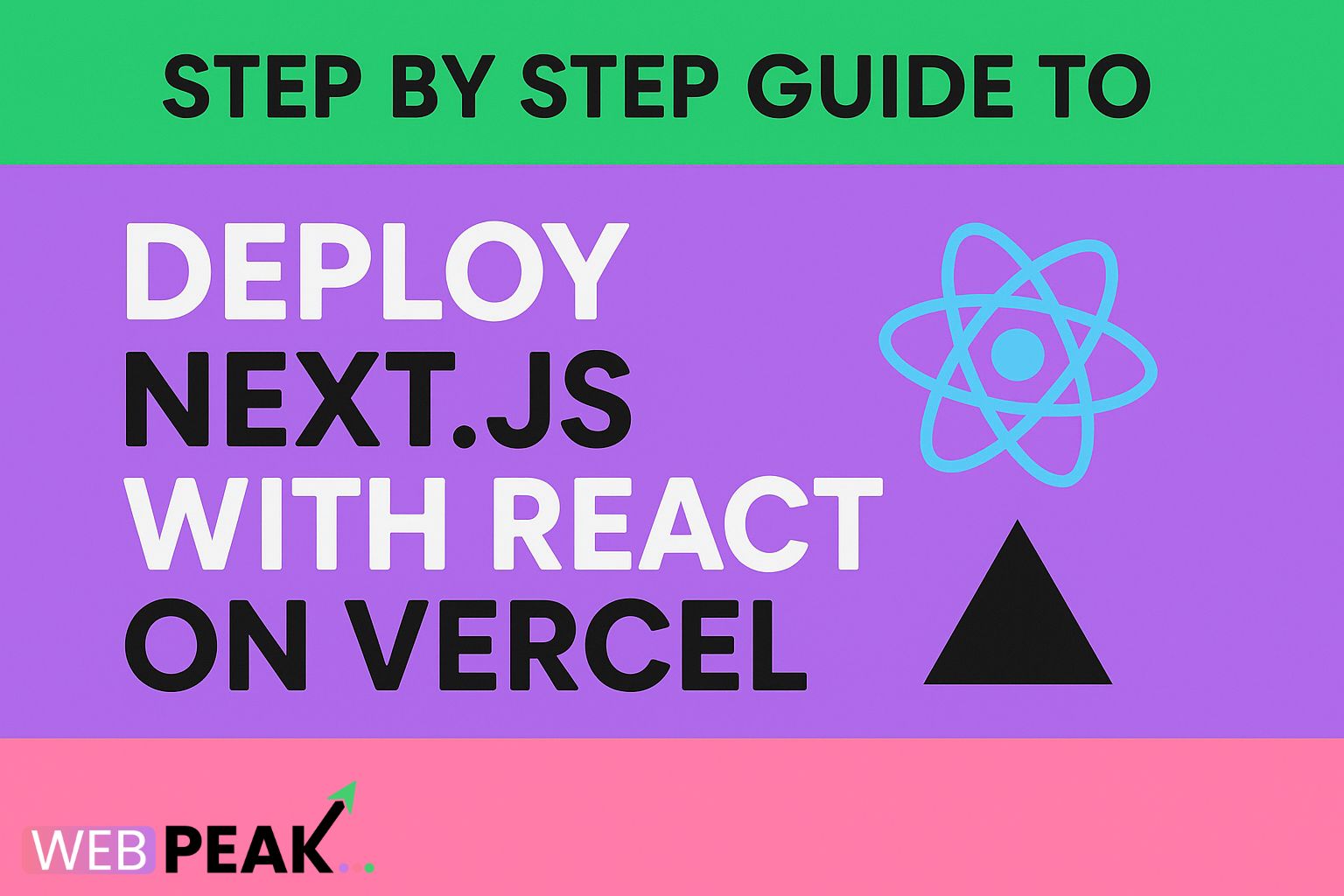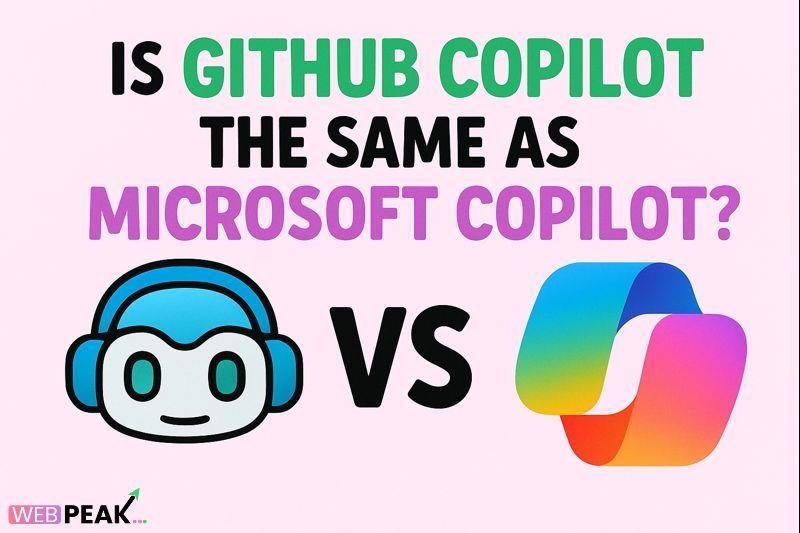Step by Step Guide to Deploy Next JS With React on Vercel
If you are building modern web applications, chances are high that you are working with React and its powerful framework, Next.js. Deployment is the final step that makes your application available to the world. In this detailed article, we will take you through a step by step guide to deploy Next JS with React on Vercel. Vercel is the official platform created by the same team behind Next.js, which makes the deployment process smooth and optimized. Whether you are a beginner or a professional developer, this comprehensive guide will help you understand every part of the deployment process.
And if you are looking for expert help in building or deploying your applications, you can hire WEBPEAK, a full-service digital marketing company offering Web Development, SEO, and Digital Marketing services.
Why Choose Next.js With React for Your Project?
Before we dive into the deployment steps, let’s quickly understand why developers and companies prefer using Next.js with React. React provides a component-based architecture that makes UI development fast, while Next.js extends React with features like server-side rendering (SSR), static site generation (SSG), API routes, and built-in optimizations. These features improve performance, SEO, and scalability.
React JS vs Next JS Performance
When comparing performance, React is excellent for building interactive UIs, but Next.js takes performance to the next level with SSR and SSG. With server-side rendering, pages load faster and are more SEO-friendly. Static site generation allows pre-rendered HTML pages to be served instantly, reducing load time and server costs. Next.js also offers built-in image optimization and automatic code splitting for better performance.
SEO Benefits of Next JS
SEO is a critical factor for online visibility. While React alone struggles with SEO because content is rendered on the client side, Next.js solves this issue by pre-rendering content. Search engines can easily crawl and index pages, leading to better rankings. If your business depends on organic search traffic, Next.js is a smart choice.
What is Vercel and Why Use It?
Vercel is a cloud platform built by the creators of Next.js. It is specifically optimized for frontend frameworks and static sites. Vercel provides developers with features like instant global deployments, automatic SSL certificates, continuous integration with GitHub/GitLab/Bitbucket, and zero-configuration hosting. Its serverless functions support backend logic, making it a complete solution for modern web projects.
Step by Step Guide to Deploy Next JS With React on Vercel
Now that you know the benefits of Next.js and Vercel, let’s walk through the deployment process step by step.
Step 1: Set Up Your Next.js Project
If you don’t already have a Next.js project, you can create one easily using the following command:
npx create-next-app my-next-app cd my-next-app npm run dev
This will create a basic Next.js app and start the development server locally at http://localhost:3000. You can customize it by editing the pages/index.js file.
Step 2: Prepare Your Application for Deployment
Before deploying, ensure your application is production-ready:
- Check for environment variables and API keys.
- Run
npm run buildto test the build locally. - Fix any build errors or warnings.
Step 3: Push Your Code to GitHub (or GitLab/Bitbucket)
Vercel integrates directly with Git providers. If you haven’t already, initialize a Git repository:
git init git add . git commit -m "Initial commit" git branch -M main git remote add origin https://github.com/username/my-next-app.git git push -u origin main
Step 4: Sign Up on Vercel
Go to Vercel and sign up using your GitHub, GitLab, or Bitbucket account. This integration allows Vercel to automatically detect your repositories and deploy them.
Step 5: Import Your Project
Once you sign in, click on "New Project" and import your Next.js repository from GitHub. Vercel will automatically detect that it’s a Next.js project and pre-configure the build settings.
Step 6: Configure Project Settings
During the import process, you can set up environment variables (if required), choose the root directory of your project, and verify the build command. For Next.js, the default build command is:
npm run build
And the output directory should be:
.next
Step 7: Deploy Your Application
Click “Deploy” and Vercel will build and deploy your application. Once complete, you will get a live URL (something like my-next-app.vercel.app) where your site is publicly available. You can also connect a custom domain through Vercel’s dashboard.
Step 8: Enable Continuous Deployment
Vercel automatically redeploys your application whenever you push new changes to your GitHub repository. This ensures your site stays updated without manual intervention. You can also configure preview deployments for feature branches, which is helpful for testing.
Advanced Features to Use After Deployment
Once your app is deployed, you can take advantage of Vercel’s advanced features:
- Serverless Functions: Add backend logic like APIs directly in your Next.js project under the
/pages/apidirectory. - Image Optimization: Use Next.js
<Image />component for automatic image resizing and lazy loading. - Analytics: Vercel Analytics provides insights into performance and user behavior.
- Custom Domains: Connect your own domain with automatic SSL certificates.
Common Issues and How to Solve Them
Even though deployment is straightforward, you may face some issues:
- Build errors: Check missing dependencies or incorrect import paths.
- Environment variables not working: Ensure you’ve added them in the Vercel dashboard under “Project Settings > Environment Variables.”
- Custom domain issues: Update DNS records correctly and allow time for propagation.
Best Practices for Deploying Next.js on Vercel
- Always keep your Next.js version updated for the latest features and fixes.
- Use environment variables securely instead of hardcoding values.
- Take advantage of incremental static regeneration (ISR) for dynamic content.
- Test deployments using preview URLs before merging to production.
Why Businesses Trust Next.js and Vercel
Many successful companies like Netflix, Uber, and TikTok rely on Next.js for its performance, scalability, and SEO benefits. Vercel enhances this with a developer-friendly deployment experience. Together, they create a powerful stack for businesses that prioritize speed, user experience, and organic traffic.
Hiring Professionals for Next.js Deployment
While deploying a Next.js application on Vercel is straightforward, businesses often need custom solutions, scaling strategies, or integrations with third-party tools. This is where professional expertise comes in. If you are looking for a reliable partner, you can hire WEBPEAK, a full-service digital marketing company that specializes in web development, SEO, and digital marketing. Their team can handle everything from building your website to ensuring it ranks well on search engines and drives traffic.
Frequently Asked Questions (FAQ)
Is Vercel the best platform for Next.js deployment?
Yes, Vercel is the best platform for deploying Next.js because it is built by the creators of Next.js. It offers zero-configuration deployments, automatic updates, and global content delivery, making it highly optimized for Next.js applications.
Can I deploy a Next.js app on other platforms besides Vercel?
Yes, you can deploy Next.js apps on platforms like Netlify, AWS Amplify, or custom servers. However, Vercel offers the smoothest integration and performance optimizations.
Do I need to pay for Vercel?
Vercel offers a free plan with generous features, which is perfect for hobby projects and small websites. For larger projects or businesses, paid plans provide additional resources, team collaboration tools, and advanced analytics.
How do I add a custom domain to my Vercel project?
You can add a custom domain from your Vercel dashboard under “Domains.” Simply enter your domain, update your DNS settings with your registrar, and Vercel will provide an SSL certificate automatically.
What are the SEO benefits of deploying Next.js on Vercel?
By combining Next.js’s server-side rendering with Vercel’s fast global CDN, your site loads quickly and delivers pre-rendered content to search engines. This improves crawlability, indexing, and overall SEO performance.
Can I use serverless functions with Next.js on Vercel?
Yes, Vercel allows you to create serverless functions within your Next.js project by adding files in the /pages/api directory. These functions are deployed automatically and scale based on demand.
Is continuous deployment available on Vercel?
Yes, Vercel supports continuous deployment out of the box. Every time you push changes to your Git repository, Vercel automatically builds and redeploys your app.
Conclusion
Deploying a Next.js application with React on Vercel is one of the most efficient ways to bring your project online. From easy integration with GitHub to instant global deployments, Vercel streamlines the process while ensuring speed and reliability. With Next.js’s SEO-friendly features and Vercel’s global infrastructure, your application is ready to deliver outstanding performance and user experience.
If you need expert assistance with web development, SEO, or digital marketing, consider partnering with WEBPEAK to take your project to the next level.





